Sign up for workout ideas, training advice, reviews of the latest gear and more.

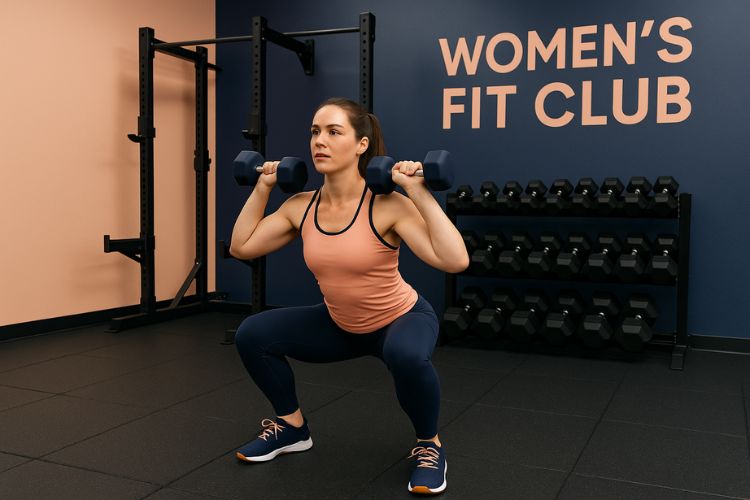
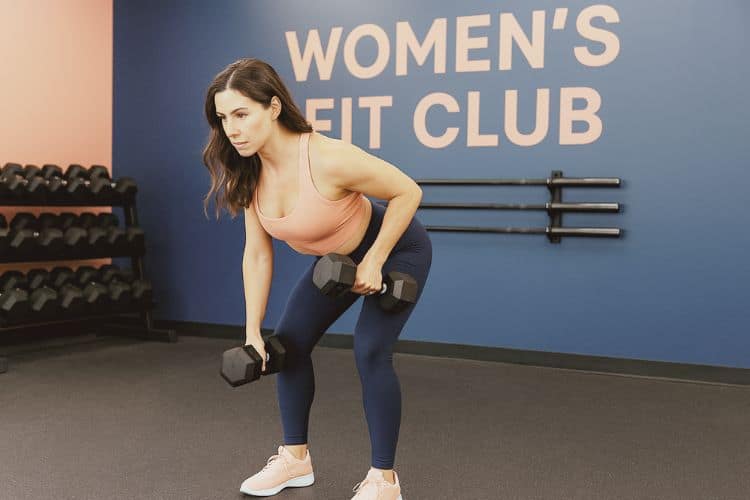
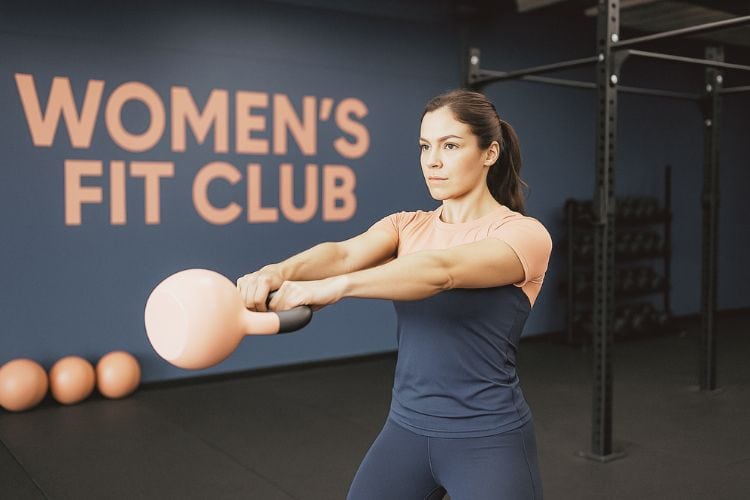
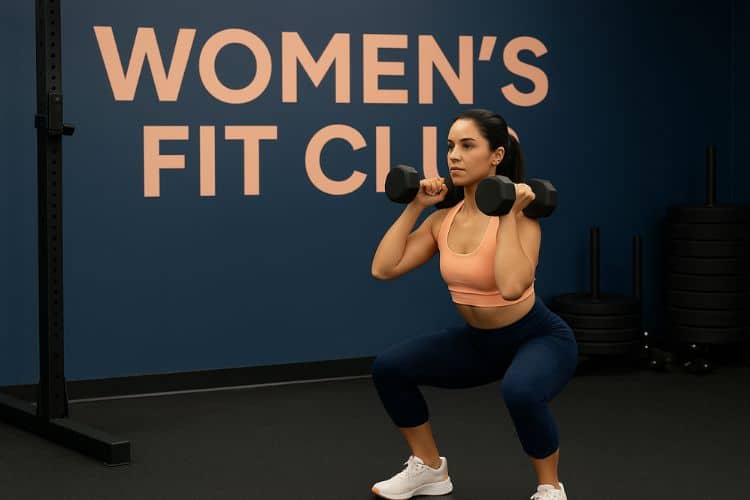

Kettlebells are among the most versatile pieces of fitness equipment you can use to sculpt a lean, strong, and powerful body. Unlike isolated movements that target a single muscle group, compound kettlebell exercises engage multiple muscle groups at once—boosting calorie burn, building strength, and improving coordination and stability. Whether you’re training at home or in the gym, this full-body compound kettlebell workout delivers results fast. In this guide, we’ll cover everything from the benefits of compound kettlebell movements to a complete, structured full-body workout you can follow for strength, endurance, and fat loss.
Compound kettlebell movements—like swings, cleans, and presses—train your body as a unit. This helps build functional strength that translates into everyday activities such as lifting, bending, and carrying. You’re not just building muscle; you’re building movement efficiency.
Because compound movements recruit multiple large muscle groups simultaneously, your heart rate stays elevated throughout the workout. This combination of resistance and cardio makes kettlebell training one of the most efficient ways to torch calories and boost metabolism.
Every compound kettlebell movement requires a strong and stable core. Even when you’re focusing on your legs or arms, your core muscles engage to maintain balance and posture. This helps improve your overall stability and prevents injuries.
Unlike traditional barbells, the kettlebell’s offset weight distribution challenges your body to stabilize through dynamic movements. This improves coordination, balance, and proprioception (your body’s awareness in space).
A well-structured compound kettlebell workout should include exercises that hit every major muscle group—upper body, lower body, and core—while keeping your heart rate high.
Here’s how to structure your routine:
Let’s break it all down step by step.
Before diving into the kettlebell workout, take 5 minutes to warm up your muscles and joints. This helps prevent injury and ensures optimal performance.
Perform each for 30 seconds:
Repeat twice for a total of 5 minutes of dynamic warm-up.
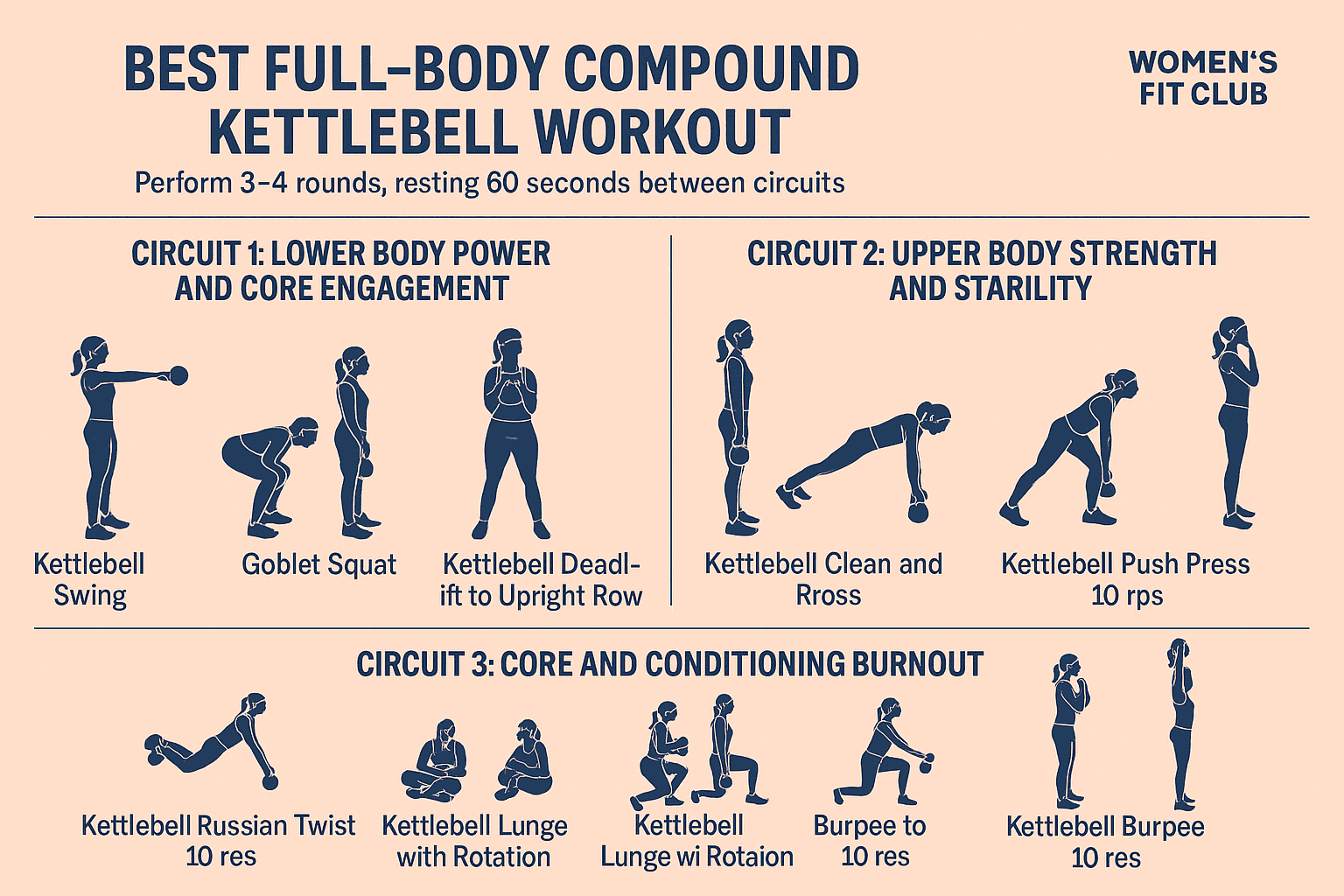
This workout uses compound kettlebell exercises that challenge multiple muscle groups at once. It’s designed to build strength, endurance, and coordination—all while burning serious calories.
Perform 3–4 rounds, resting 60 seconds between circuits.
The kettlebell swing is a foundational full-body movement that builds explosive power in your glutes, hamstrings, and core.
How to do it:
Muscles worked: Glutes, hamstrings, core, shoulders.
A perfect exercise to strengthen your legs and improve posture.
How to do it:
Muscles worked: Quads, glutes, core.
Combines a hip hinge with an upper-body pull for total-body activation.
How to do it:
Muscles worked: Hamstrings, glutes, traps, shoulders, biceps.
A dynamic compound movement that builds power, coordination, and strength.
How to do it:
Muscles worked: Shoulders, biceps, triceps, glutes, core.
An advanced move that strengthens your back and arms while engaging the core.
How to do it:
Muscles worked: Lats, shoulders, triceps, abs.
A powerful movement that builds upper-body strength and explosive endurance.
How to do it:
Muscles worked: Shoulders, triceps, legs.
Engage your obliques and core while improving rotational stability.
How to do it:
Muscles worked: Obliques, abs, lower back.
This functional movement improves balance, leg strength, and core engagement.
How to do it:
Muscles worked: Legs, glutes, obliques.
A high-intensity finisher combining cardio and strength.
How to do it:
Muscles worked: Full body – chest, shoulders, legs, and core.
For an extra challenge, try this 5-minute AMRAP (As Many Rounds As Possible):
Repeat as many rounds as possible in 5 minutes. Rest only as needed.
After an intense kettlebell session, take 5 minutes to stretch and reset your muscles.
Cool-down stretches:
Deep breathing during your cooldown promotes relaxation and recovery.
To maximize results from your full-body kettlebell workouts, aim for 3–4 sessions per week, allowing at least one rest or recovery day between sessions.
| Day | Workout Focus |
|---|---|
| Monday | Full-Body Compound Kettlebell Workout |
| Tuesday | Active Recovery (Yoga or Light Cardio) |
| Wednesday | Kettlebell HIIT or Core Training |
| Thursday | Rest |
| Friday | Full-Body Kettlebell Power Workout |
| Saturday | Optional: Kettlebell Conditioning Circuit |
| Sunday | Rest or Mobility Training |
Proper form is essential to prevent injuries and ensure you’re engaging the right muscles. Master the basic kettlebell swing, clean, and squat before progressing to complex moves.
For beginners, women can start with 8–12 kg (18–26 lbs) and progress as strength improves. Men may start with 12–20 kg (26–44 lbs). The weight should challenge you without sacrificing form.
Control your breathing—exhale during exertion (like swinging or pressing) and inhale during the lowering phase. Proper breathing helps stabilize your core and improve endurance.
Strength and fat-loss goals rely on consistent nutrition. Pair your kettlebell training with lean proteins, whole grains, and plenty of vegetables to fuel your performance.
Note your reps, sets, and weights. Gradually increase load or intensity over time to continue seeing results through progressive overload.
Because these movements target major muscle groups simultaneously, they help you build overall strength rather than isolating a single area.
Kettlebell workouts raise your heart rate, turning strength sessions into calorie-burning cardio workouts.
In just 30–40 minutes, you can achieve the same strength and conditioning benefits as a much longer gym session.
Kettlebell training enhances your balance and posture through core engagement in every movement.
Many compound kettlebell moves improve hip and shoulder mobility, reducing stiffness and promoting better athletic performance.
Here’s a quick sample version of the workout you can do at home or in the gym:
| Exercise | Reps | Rest |
|---|---|---|
| Kettlebell Swing | 15 | 30 sec |
| Goblet Squat | 12 | 30 sec |
| Kettlebell Clean and Press | 10 per side | 30 sec |
| Renegade Row | 10 per side | 30 sec |
| Kettlebell Lunge with Rotation | 10 per side | 30 sec |
| Kettlebell Burpee to Press | 8 | 60 sec |
Repeat for 3 rounds for a complete 30-minute session.
The best full-body compound kettlebell workout combines power, endurance, and control to deliver maximum results in minimal time. With consistent training, you’ll see stronger legs, a more defined core, and improved posture—all while torching fat and boosting metabolism.
Remember, the key is progression. Start with lighter weights, master your technique, and gradually challenge your body with heavier kettlebells and more reps. With just one kettlebell, you can transform your entire body—and your fitness level.
Stay up to date on the latest women’s health, fitness and lifestyle trends and tips.